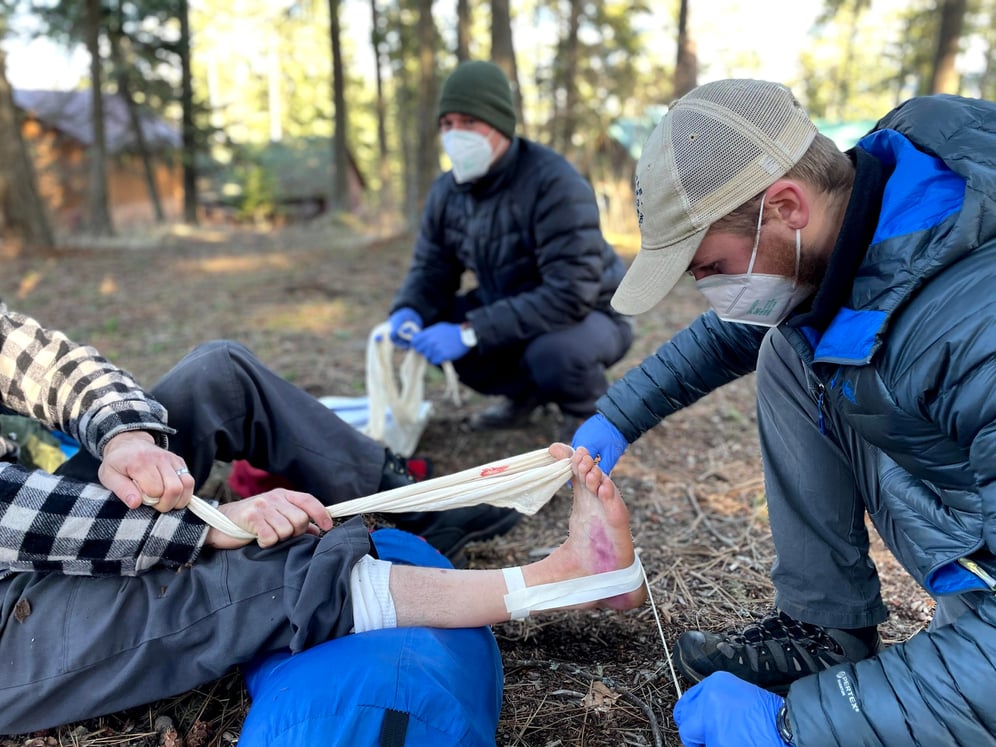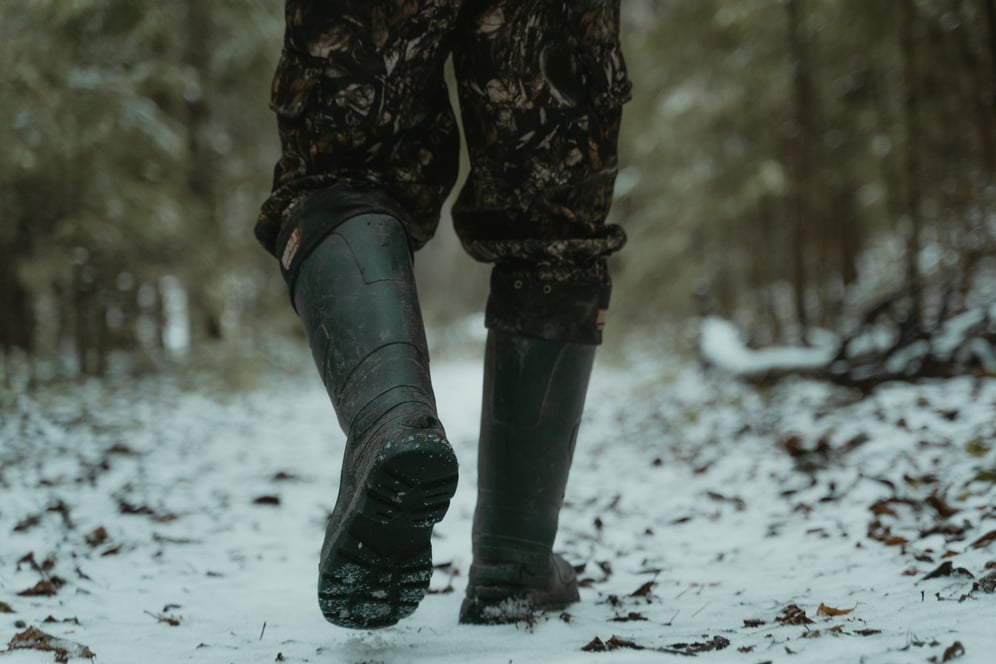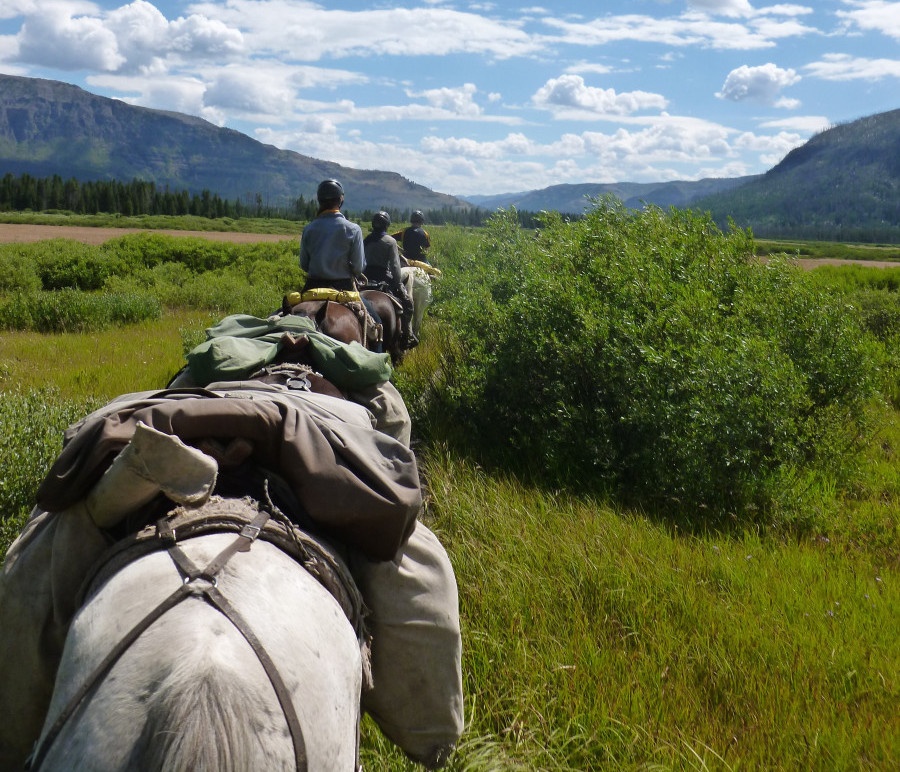
Editor’s Note: This case study was updated in 2024.
You and your hunting partner are midway through what has been an exceptional extended weekend elk hunting in the Wind Rivers. You are base camping in the Shoshone National Forest. Highway 28 is 30 minutes away via dirt road, the nearest town is 30 minutes further.
Early into the morning, the two of you have attained a spacious ledge on which you set up a spotting scope. Your partner sees a spot higher up with what he thinks may be a slightly better vantage point. As he eagerly scrambles up the slope you encourage caution, but his enthusiasm seems to be winning out. Suddenly one of the small bushes he was using as a handhold pulls out of the ground, and he slides down the rocky hillside, coming to rest against a medium-sized boulder. His feet impact first, and he grabs his right ankle, signaling a possible end to the hunting trip.
SOAP Report
Subjective
The patient is a 27-year-old male whose chief complaint is pain in the right ankle. Patient slid approximately 12 feet while scrambling, absorbing the force of the fall with right side of body and feet. He did not hit his head. Patient is currently A&O x 4.
Objective
Position found:
Patient was helped to a ledge without incident, and is resting comfortably on his back.
Patient Exam
Head to toe revealed a two-inch long, quarter-inch wide laceration to the right lateral mid thigh. Abrasions along the right lower leg. The right ankle is swollen with pain and general tenderness, but no point tenderness and good CSM in the toes. No other injuries were found. Patient denies head, neck and back pain. There was no loss of consciousness.
Vital Signs
|
Time |
1015 hrs |
|
Level of responsiveness |
A+Ox4 |
|
Heart rate |
88, strong, regular |
|
Respiratory rate |
24, shallow, regular |
|
Skin color, temp, moisture |
Pink, warm, dry |
|
Blood pressure |
Strong radial pulse |
|
Pupils |
PERRL |
|
Temperature |
Not taken |
History
Symptoms |
Chief complaint is pain in right ankle. |
|
Allergies |
Peanuts, one severe reaction several years ago. |
|
Medications |
Patient took 400 mg Ibuprofen this morning for minor aches. |
|
Pertinent Hx |
Denies pertinent history. |
|
Last in/out |
Patient had eggs and toast with juice and 1L of water. Outputs are unremarkable. |
|
Events |
Patient slid approximately 12 feet while scrambling, absorbing the force of the fall with right side of body and feet. |
Stop Reading!
What is your assessment and plan? What is your Assessment and Plan? DO NOT click/peek at the next page without answering this first.

Assessment
This patient has an injury to his right ankle. He also has abrasions to his right lower leg and a laceration to his right thigh. Based on the MOI this patient is an unlikely candidate for spine injury.
Plan
Any bleeding was controlled with direct pressure. The wounds will be further assessed in camp where there are more materials for specific wound care.
A usability test was performed on the right ankle. The patient is able to bear weight.
Once in camp, we will irrigate and clean the abrasion, then dress the abrasion with a clean, dry gauze dressing. The laceration will be assessed for length, depth and width. It will be irrigated and closed with steri-strips or butterfly bandages. Finally, the laceration will be dressed with a microthin dressing.
Additionally, we will manage the pain of the ankle injury and support with tape as activity warrants.
Anticipated problems
- Possible wound infections
- Inability to bear weight on the ankle
Comments
A good thorough assessment is the standard for any patient-caregiver interaction. This patient presented with a couple of injuries that could be treated quite differently depending on what exactly the assessment revealed.
The ankle:
A usability test can help to determine the extent of the musculoskeletal injury. We don’t try to diagnose the injury or grade a sprain or a strain. We decide if an injury is usable or not. If usable, we may tape or wrap for support. If unusable we immobilize and evacuate. We manage the patient’s pain, as needed.
The approach for pain management is:
• Ice: Cooling the area for 20-40 minutes may help. You may continue ice every 2-4 hours or after use.
• Elevation: Raising the injury above the patient’s heart may reduce swelling and help manage pain.
• Compression wraps may reduce swelling and help manage pain.
• Consider pain medication.
For this patient and the single rescuer, a usability test may help determine whether this patient will self-evacuate to camp or if the rescuer will need to go for help to evacuate. A good thorough assessment can help determine whether this is a trip ending injury or one that can be taken care of with some diligence in camp. The patient may be hunting, but they could certainly sit and enjoy a sunset while the dishes are being done!
The soft tissue wounds:
A review of our wilderness protocols regarding laceration closure shows that this wound can indeed be effectively closed. A laceration wider than a half inch would need to be packed open and eventually assessed by a physician. Paying particular attention to the prevention of infection will go a long way to ensure this wound heals without incident in the field.
Cleaning Wounds:
• Wash your hands with soap and water
• Put on protective gloves
• Scrub and irrigate the wound
• Scrub the area around the wound
• Use sterilized tweezers to remove debris
• Use pressure irrigation
• Rinse thoroughly with disinfected water
• Dress and bandage the wound
• Check circulation, sensation, and movement
Monitoring for early signs of infection you’ll look for:
• Redness and swelling
• Pus, heat, pain
End of the Tale
You and your partner make the decision to continue hunting. The soft tissue injuries seem to be healing without complication.The ankle injury, which has some mild bruising, is still painful but with decreased swelling. Comfort treatment in the evening and a supportive tape wrap during the day works to keep you both active. Although his mobility keeps him from covering major miles, he is able to be your spotter as you continue your quest for an elk.
Written By
Gates Richards
Gates Richards has been involved in outdoor education and EMS since the early '90s. Over the years he's worked outdoor programming throughout the Rockies, Pacific Northwest and Alaska. He's worked urban EMS in DC, WA, CO and WY. Gates began teaching for NOLS Wilderness Medicine in 1998 and has been awarded the Wilderness Medical Society's Warren Bowman award for contributions to wilderness medicine by a non-physician as well as the National Collegiate EMS Foundation's Distinguished Service Award. He was the former Associate Director and is currently a NOLS Wilderness Medicine Faculty member.



